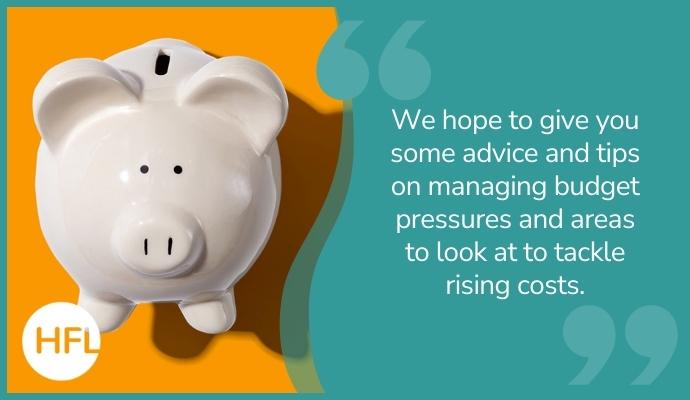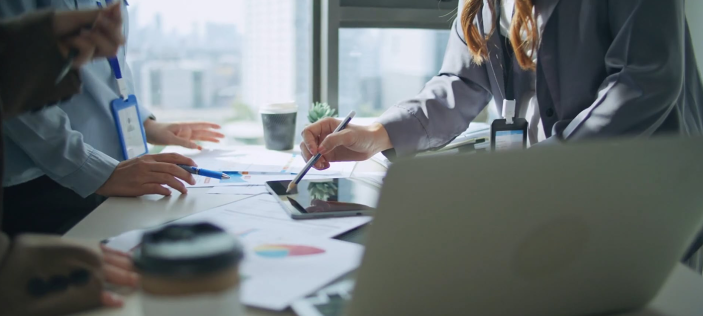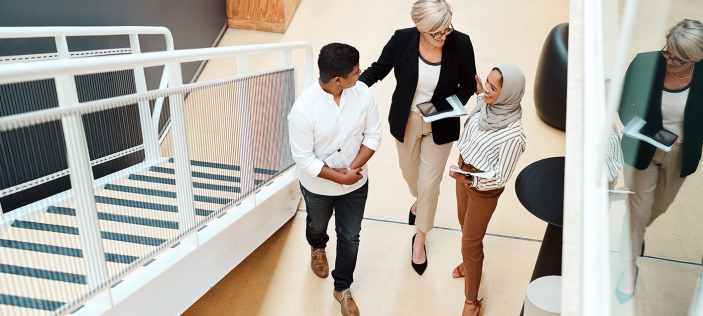
We are very aware of the financial issues facing schools currently, with the rising costs of salaries, energy, catering and consumables costs. This all comes on the back of schools trying to recover from the impact of COVID on staff, pupils and schools’ finances. Schools are facing an unprecedented time in managing their budgets with the Government stating there will be no additional funds being made available to schools. We hope to give you some advice and tips on managing budget pressures and areas to look at to tackle rising costs.
What we do know:
- Institute of Fiscal Studies estimate school costs in 2022/23 will increase by 6%
- teachers pay final offer higher than initial recommendations to STRB, at around 5%
- non-teaching staff costs anticipated at 9% based on current LG Employers Offer – not yet agreed
- utility costs – electricity estimate 61% increase, gas – initial estimate up to 135% increase, now likely to be higher for some schools 150% - 200%
There is some good news, with the government having released today that energy bills will benefit from a new government Energy Bill Relief Scheme. This will cap prices paid per megawatt hour (MWh) for both electricity and gas for those on non-domestic contracts who are on existing fixed prices contracts agreed on or after 1 April, singing new fixed price contracts, on deemed/ out of contract or variable tariff or on flexible purchase or similar contracts. Whilst this news is welcome, it remains that schools will still be facing ongoing cost challenges.
When looking at your overall cost base, it is important to be aware of your fixed costs – these are essentials that you have limited control over – although you can go to market for competitive pricing for these.
Fixed costs:
- insurance
- utilities
- salaries
- procured contracts
- premises
It is equally important to be aware of your variable costs are those that are impacted by the volume of activity for example the number of pupils, which will determine the number of staff required, as well as the repair and maintenance and general upkeep of your premises.
Variable costs:
- general supplies
- curriculum resources
- software licences
- repairs and maintenance
Actions to manage your costs
- review your staffing structure, does it meet the essential needs of your current and future pupils – compare an essential staffing structure against your current structure – why are there variances? Are you aware of any changes i.e. retirements, parental leave or recruitment and retention issues?
- consider running the metrics based on the national medians, are your costs in line with the medians or above – if so, why?
- can you meet your staffing and operating costs from within your in-year income or are you relying on carry forward to achieve a balanced budget?
- be aware of good v bad expenditure – is your expenditure going to have a positive impact on the children’s outcome – if not is it needed?
- can the project you have set aside funds be delayed for 12-18 months?
- scrutinise your budget line by line – don’t just roll over from last year – can savings be made – cancel contracts/licences no longer utilised or required.
- undertake regular reconciliations – wrap around care, school trips – is the income covering the expenditure?
In 2012 the Government released a paper on top tips for sustainability in schools. Whilst this paper is outdated the tips are still as relevant today:
- reduce energy use in your school, this includes energy efficient lighting, upgrade of heating controls, seal draughty windows and doors – don’t prop open external doors allowing the heat out. Understand your bills and how much energy is used. Turn off lights, computers, monitors when not being used. Turn down your heating by 1º this could save you 5% - 10% on your heating bills
- check for and repair water leaks including dripping taps. Underground leaks, take a meter reading at night as everyone leaves, check again in the morning if there is movement is there a leak?
- work towards becoming paperless, utilise the technology around you – don’t print worksheets use interactive whiteboards and visualisers. Send letters electronically or publish on the school website or via social media
- use sustainable purchasing – don’t buy unless you need to, plan ahead so you don’t incur additional delivery costs. Don’t spend hours saving a pound. Improve you buying power, work collaboratively and get the best deal for your money.
- work on reducing your carbon footprint – recycle, re-use what you’ve got – don’t just throw it away. Install a print management system on the centralised printers/photocopiers. If you don’t need it consider donating to a local nursery.
- for in house catering, align your menus with seasonal production and purchase local – sometimes the supermarket is cheaper than the big catering firms and they deliver.
Difficult choices
We all recognise that difficult decisions are going to have to be made and for those schools already facing financial difficulties, these increased costs are adding additional pressure. Schools also need to be aware of the ‘tipping point’ – the impact on pupil outcomes your savings might make – if it is negative then try and find a different way of making savings.
If you are still struggling with your budget or you require any further help or guidance, then please do contact HCC at csf.sfu@hertfordshire.gov.uk






